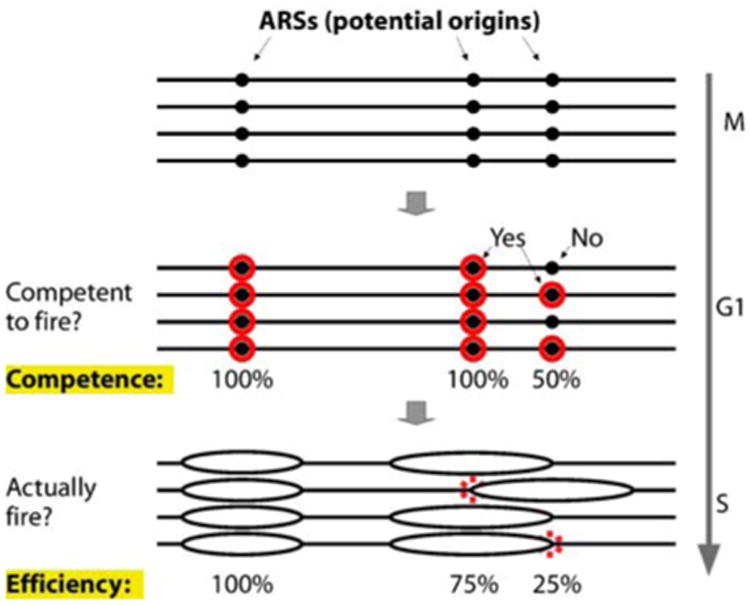Nomenclature.

Origin efficiency: the percentage of cells in which an origin is observed to initiate DNA synthesis (or “fire”) in any given S phase. Origin competence: the percentage of cells in which an origin is biochemically competent to fire. Firing probability or instantaneous firing probability: the probability that an origin will fire during a particular interval within S phase. Firing rate or spatiotemporal initiation density: the number of initiations occurring per unit of time per length in the genome. The relationship between competence and origin efficiency is illustrated in the diagram above (modified from McCune et al. 2008). Depicted are three ARSs in a four-cell population as it enters S phase. An ARS has the potential to be used as an origin. It may be 100% competent if it successfully becomes biochemically competent to fire (red ring) in every cell in the population, or it may show <100% competence if it fails to achieve biochemical competence in some cells in the population. In those cells in which the origin failed to become competent, it would simply be replicated passively. The same fate may befall an origin that is competent but nevertheless is passively replicated by an incoming fork arriving at the origin before it has a chance to fire (broken red ring). Origin efficiency is the percentage of cells in which the origin actually fires
